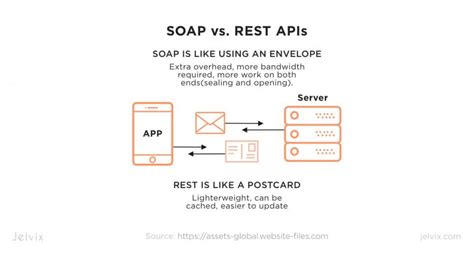Ethereum: REST API vs Websocket for buying an asset
Choosing between Rest API and webSockeet for buying assets: a comparison
As an owner of the electronic trade platform that wants to integrate the acquisition functionality of cryptocurrency in your application, you may have taken into account the use of either a Rest API or a solution based on WebSocout. While both options offer advantages, they deal with different cases of use and compromises between speed, reliability and scalability.
Rest api
A rest (representative state of resources) is an architectural style that offers a fixed and predictable interface for the interaction with the resources on the server. When it comes to purchasing assets, a rest can be used to take data from exchanges such as binance or kucoin in real time. Here are some key advantages to use a Rest API:
* Fast and effective : Data taking is usually faster than webSocout use because it is based on http requests and answers.
* Scalability : Rest APIs can manage large volumes of concomitant requests without sacrificing performance.
* Easy to implement : Many exchanges provide pre-built resting APIs for common use cases, which makes integration with your application simple.
However, there are some potential disadvantages to consider:
* Lack of real -time updates : If you need to receive real -time price updates, a rest may not be the best choice due to latency constraints.
* Limited control over data retrieval : You may have a limited control over how the data is taken and processed by the exchange.
WebSocout
A webSocout is a protocol of the applications layer that allows two -way, low latency between a customer (your application) and a server. When it comes to buying assets on exchanges such as Binance or Kucoin, WebSocout offers more advantages:
* Real -time updates : WebSocout allows instant price updates, which makes it ideal for applications that require real -time market data.
* Complete control over data retrieval : You can choose what data points you want to receive and when, giving your application more flexibility and control.
However, there are some compromises to consider:
* Tarber data taking : WebSocout requests are usually slower than API requests due to general expenses to set a persistent connection.
* Larger bandwidth requirements : Exchanges often require larger bandwidth to manage increased traffic by webSocout connections.
Choosing the correct approach
Given the requirements of your application, it is essential to weigh the advantages and against each approach. Here are some questions to ask you:
* Do you need real -time price updates? : If yes, a webSocout could be a better choice due to its ability to provide instant updates.
* Latent constraints are a concern? : If your application does not require real -time updates, a rest could be sufficient.
* Do you want a full control over data taking over? : If so, choosing a webSocout -based solution can give you more flexibility.
Recommendation
If I were you, I would recommend the use of a webSocout -based solution for buying exchanges such as binance or kucoin. This allows real -time price updates and gives instant feedback to your application.
additional tips
Regardless of the approach you choose, consider the following good practices:
* Test well : validate that both API responds as they are expected and they are correctly dealing with edge cases.
* Use cache memory mechanisms

: implement cache to reduce the number of requests made to exchange servers.
* Monitor performance : Continuously monitor your application performance in different loading scenarios to ensure optimum performance.

